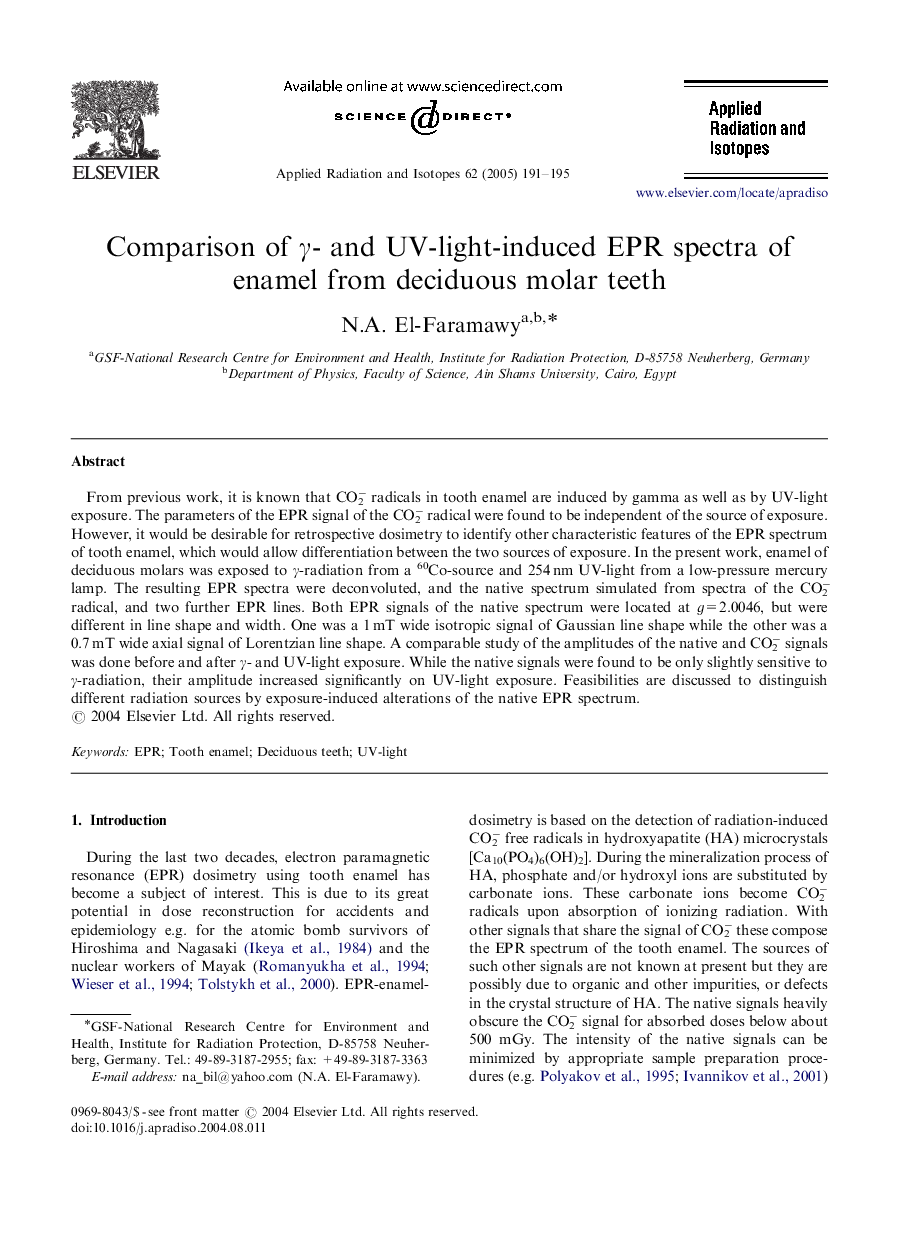| Article ID | Journal | Published Year | Pages | File Type |
|---|---|---|---|---|
| 10730223 | Applied Radiation and Isotopes | 2005 | 5 Pages |
Abstract
From previous work, it is known that CO2â radicals in tooth enamel are induced by gamma as well as by UV-light exposure. The parameters of the EPR signal of the COâ2 radical were found to be independent of the source of exposure. However, it would be desirable for retrospective dosimetry to identify other characteristic features of the EPR spectrum of tooth enamel, which would allow differentiation between the two sources of exposure. In the present work, enamel of deciduous molars was exposed to γ-radiation from a 60Co-source and 254 nm UV-light from a low-pressure mercury lamp. The resulting EPR spectra were deconvoluted, and the native spectrum simulated from spectra of the COâ2 radical, and two further EPR lines. Both EPR signals of the native spectrum were located at g=2.0046, but were different in line shape and width. One was a 1 mT wide isotropic signal of Gaussian line shape while the other was a 0.7 mT wide axial signal of Lorentzian line shape. A comparable study of the amplitudes of the native and CO2â signals was done before and after γ- and UV-light exposure. While the native signals were found to be only slightly sensitive to γ-radiation, their amplitude increased significantly on UV-light exposure. Feasibilities are discussed to distinguish different radiation sources by exposure-induced alterations of the native EPR spectrum.
Related Topics
Physical Sciences and Engineering
Physics and Astronomy
Radiation
Authors
N.A. El-Faramawy,
